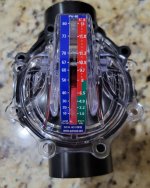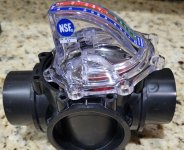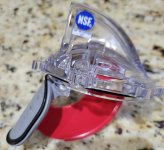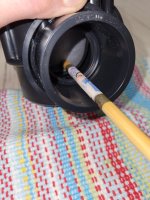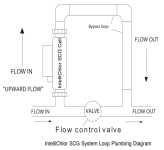I got this flow meter that doubles as a check valve on Amazon for some new pumbing on a heat pump. I figured this was a good way to determine flow coming out of the heat pump so I could maximize efficiency on the pump. I also needed a check valve to use for the bypass.
It seems very restrictive by design but I could be totally wrong. The pictures I tried to take show how far the flapper is open at approximately 55 gpm. When you look how little space there is for the water to pass at 55 gpm, I wonder how this cannot be restrictive?
Is the idea behind this device to measure the gpm that's actually hitting the flapper and not how much water is actually moving past it? But if that's true then what's the point of using this since you want that actual amount of flow to go where it needs to go.
It seems very restrictive by design but I could be totally wrong. The pictures I tried to take show how far the flapper is open at approximately 55 gpm. When you look how little space there is for the water to pass at 55 gpm, I wonder how this cannot be restrictive?
Is the idea behind this device to measure the gpm that's actually hitting the flapper and not how much water is actually moving past it? But if that's true then what's the point of using this since you want that actual amount of flow to go where it needs to go.


